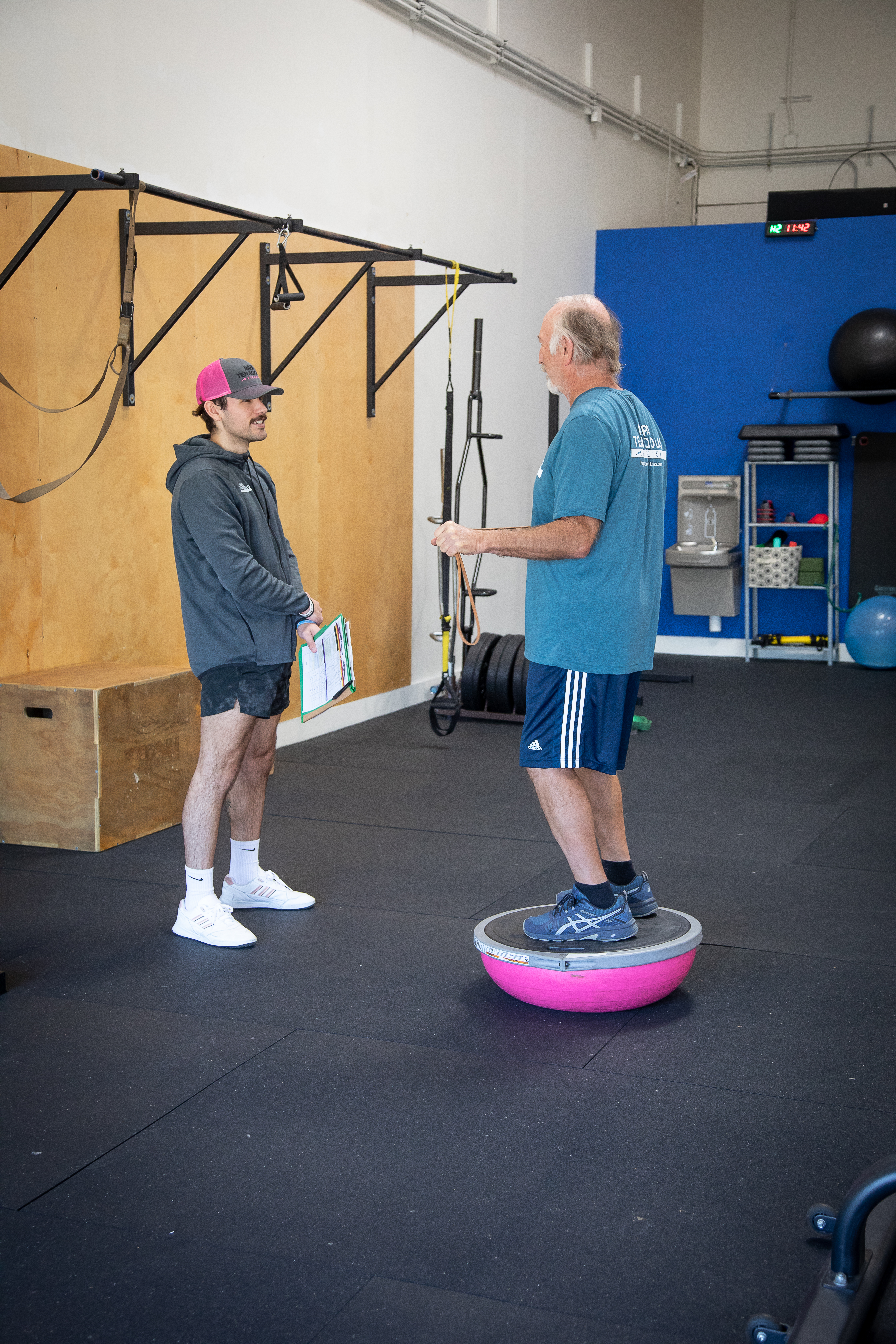“Taking a digger,” “getting up close and personal with the stairs,” or “eating it” are comical phrases when relating to an event where gravity got the best of us, causing us to fall. Typically, these humorous situations can be laughed off and we can live as if nothing happened.
Falls could be a simple trip and tumble to the ground. It seems like nothing ever happened after a brief dusting off the pants and clapping debris off our hands. However, falling is no laughing matter for individuals with hindered balanced, deconditioned fitness levels, or degenerative bone disease. A fall could be as minor as a scraped knee or as catastrophic as a broken bone.
Decreasing the risk factors of falling is critical to everyday life when recovering from injuries, balance is an issue, or with the advancement of age. It’s no surprise a strong and fit body can shave off risk factors of falling. Increased strength and lean muscle mass in the ankle, knee, hip, and back promote increased neuromuscular facilitation, overall body strength, and decrease the likelihood of fatigue when performing long bouts of physical activity. A less common variable in the equation of decreasing fall occurrences and the severity of the result of falls is using our hands to grab onto an object both during and after a fall.
For those of us who had the privilege of seeing babies develop into mobile bipedal humans, you’ve seen the evolution of how a human learns to stand upright from a prone crawling position. Babies just learning to walk will army crawl to an object, such as the arm of a couch, grab onto it, and pull themselves up so they can stand. After mastering standing up and establishing their balance, they might peruse a hallway, using the wall as a safety guide as they slide an outstretched hand on the wall. If the newly walking child falls in the middle of a room, they’ll crawl to an object or person, grab onto it with their tiny fingers, and pull themselves up to standing.
Let’s put ourselves in the shoes of a fully grown five-foot ten-inch tall adult who has just stumbled over a dog and fallen backward. After assessing ourselves and understanding the severity of the fall, we’ll find ourselves on the ground. Ironically, this is the same position as the youngster learning to walk: on the ground, wondering how to stand up. One of the first things we use to get back up from a fall is our hands. We might sit upright, using our hands to push off the ground to extend our arms, assisting our torso to sit up. After establishing a seated position, a helpful bystander might extend their arm; asking you to grab their hand. You might be alone after a falling scenario. Finding an object like a rail, pole, or fence are objects we can use our hands to wrap our fingers around and pull ourselves up.
An equally vital variable during falls is our natural response to reach out to something to grab hold of to intervene with an in-progress fall by decreasing the velocity of our body as it drops. Again, the importance of using our fingers’ gripping ability to grab onto objects is critically important to this piece of decreasing the severity of falling.
Optimizing grip strength through exercise is a productive tool for falling events to support the performance of our impulse to reach out for something during a fall or grab onto an object to help us up after a fall. Along with forearm, biceps, and triceps strength, training finger strength is essential for the ability to efficiently grab onto objects. Therefore, a simple and effective exercise to input into any exercise routine is the finger flexion and extension exercise.
To perform the finger flexion and extension exercise, start in a standing position and elevate your arms with your elbows extended at your collar bone height. As your arms remain elevated and you demonstrate a pristine example of perfect human posture, spread your fingertips out as if you are putting your fingers in a set of gloves. Hold this position at its maximum range of motion for one to two seconds. After you experience a brief muscular sensation in your fingers, wrist, and forearms, reverse the action and squeeze your finger and thumbs toward the palms of your hand as if you are ringing out a wet towel. Hold this squeezing motion for one to two seconds until a muscular sensation can be experienced in the palms, wrist, and forearms. Repeat these movements for five to ten repetitions on both arms at once.
Optimal fitness levels such as strength, cardiovascular endurance, and balance help mitigate fall risk factors. However, let’s not forget to continue to exercise the very motion that helped us when we took our first steps as humans. The ability to grab onto something and help ourselves up can get us out of some of the most troublesome situations.
Sean McCawley, the founder and owner of Napa Tenacious Fitness in Napa, CA, welcomes questions and comments. Reach him at 707-287-2727, napatenacious@gmail.com, or visit the website napatenaciousfitness.com.

